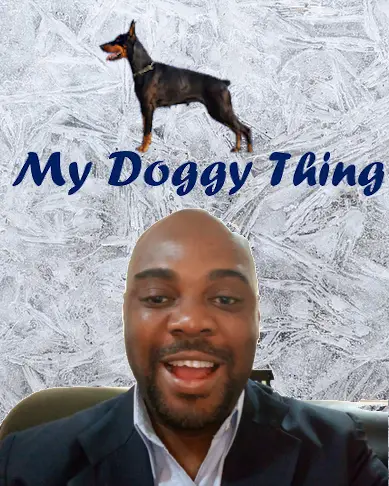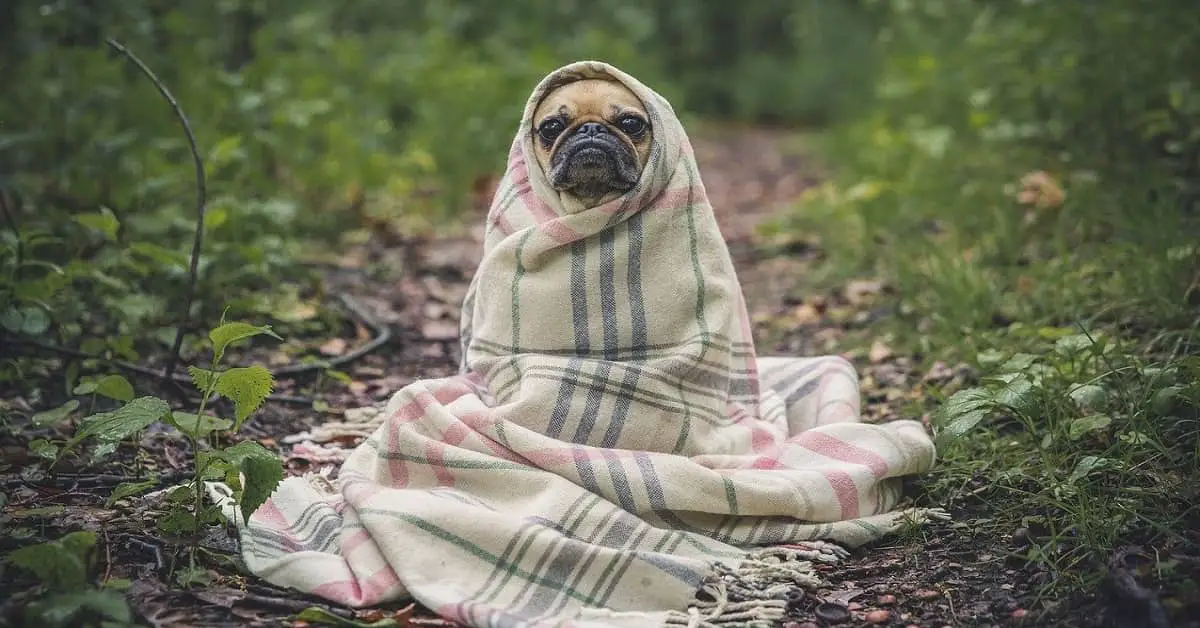Everything seems to be ok, you are relaxing in your favorite chair, watching your favorite TV program and suddenly your dog starts making strange quack sounds. You look around to ascertain where the sound is coming from as you don’t want to believe that’s It’s your dog and sure enough he makes the same quacking sound again. Watching your dog make the same quacking sound over and over again can be very terrifying and you probably would be in a state of worry now wondering…
Why is my dog quacking?
What you are currently witnessing is an episode or occurrence in dogs called Reverse Sneezing (Backward Sneezing).
Dogs with typically broad and short skull structures (also called brachycephalic skulls) e.g pugs are prone to these episodes. You will find your dog typically trying to extend its head and neck as he or she continuously tries to clear their airways, making quick long inhalations and loud quacking sounds while exhaling till he or she gets some form of temporary relief.
It is worth a quick note that though these episodes are very uncomfortable for the dog, they are in no way life-threatening to him or her.
The next line of thought would be:
.
.
What are the causes? What can I do now to manage the situation?
Is this common and what likely would my vet doctor say?
What are the causes?
Although the exact causes of these episodes have not been determined, every Vet doctor seems to agree that it is being caused by some form of irritation to the nasal region of your pet. It can also be due to some form of allergy your dog has.
Listed below are some conditions which can lead to your dog quacking or in the correct term Reverse Sneeze
Intensified excitement.
It is not very obvious, but dogs do have a limit as to how much they can exert themselves physically. On average, a dog takes between ten to thirty breathes every minute. Any physical activity that makes your dog exceed this average breathing can cause the nasal cavity to collapse temporarily or force mucus into the nasal cavity which in turn leads to your dog trying to catch her breath which in turn leads to your dog quacking.
Improper digestion(both solid and liquid).
Improper digestion is not an uncommon problem in dogs, but certain species. How it manifests itself is different. One of the ways, in which improper digestion of both solid and liquid food is manifested is through reverse sneezing or quacking in your dog. Much like human beings, problems with the digestive system can lead to the reverse flow of food in the digestive tract and lead to temporary blockage in the nasal cavity which in turn causes Reverse Sneezing
Tugging hard on your dog’s leash
Apart from the physical damage which tugging hard on your dog’s neck using a leash might cause to your pet. This is generally not a good practice and can lead to a lot of emotional and behavioral problems for your dog. That being said leashes are traditionally put around your dog’s neck. The neck obviously is a passageway to the lungs and digestive organs.
Rough handling of this region can easily lead to the temporary collapse of the nasal cavity making your dog quack.
Mites.
Yes mites, if you have ever had encounters with stray dogs. The ones you find always itching and scratching themselves. The cause of that situation in those dogs is mites. They are small tiny creatures not more than a millimeter long which normally tries to burrow itself in the skin of the dog.
Yes, these mites cause a lot of problems to dogs, but the particular type that causes your dog to quack or reverse sneeze is called Canine Nasal mites (Pneumonyssoides Caninum)
They can be transmitted from one infected dog to another. They can also be transmitted through unhealthy environmental conditions for your dog. Some symptoms your dog might exhibit in addition to quacking are nasal discharge, labored breathing, Impaired sense of smell, and sometimes bleeding from the nose.
Unfamiliar bodies caught in the throat.
These bodies are usually the ones that cannot be properly digested by your dog. Things like plastic and rubber materials. If you have a dog that is into chewing these kinds of stuff and you have not yet managed to get things under control here, there is a lot of chance that these indigestible bodies can lodge themselves in your dog’s throat. The only possible option for your dog to free itself from this situation is to try reverse sneezing.
Environmental irritants and cologne.
Environmental irritants and cologne can also lead to your dog quacking. Dogs are much prone to these irritants between the first and third years of their lives. These irritants mostly affect the dog’s immune system directly and the results can be chronic at times. Exposures to mold spores, pollens and dust mites to mention a few can make your dog prone to environmental allergies quicker than you can imagine. Proper management of your pet’s environment is very important if you are to reduce the risk of your dog quacking.
You should also be aware that there are other risks linked to environmental irritants for your dogs such as skin inflammation and extreme itchiness. Therefore it is important to try and properly manage what your dog gets exposed to.
Your cologne might give you a lot of joy, but there is enough proof that they are not good for your dog. Cologne contains ethanol which is known to be very dangerous to your dog. There are the ones that also contain some essential oil which is also not good for our dogs. A combination of these two (ethanol and essential oils) can be very deadly for your dog.
It’s important to keep them away when using our cologne.
Viruses.
By now you should be very much aware that your dog can get infected by viruses if you don’t take care of her well. Some of the viruses can be transmitted through you to your dog and some can be gotten by your dog coming in contact with an infected object or animal. Unfortunately, for viruses, the only way to ascertain what is happening would be regular visits to your veterinary doctor
What can I do now to manage the situation?
Most episodes of your dog quacking or reverse sneezing do not require any special medical attention. If you find your dog having quacking episodes, you can easily manage it by gently stroking its neck until your pet calms down. Depending on your relationship with your dog, you can try closing off his or her nostrils for a few seconds, this will help your dog concentrate on freeing up its nasal cavity through the mouth and not the nose. Once your dog begins to exhale through the nose, then the episode is over.
Like we said earlier, your dog quacking/reverse sneezing is not a life-threatening situation but can be an indication of other problems that have not been properly handled.
Here are some other things you can do to reduce your dog quacking episodes.
- Try and control the level of erratic activity or commotion in your home and environment. A thing as simple as controlling the noise level around your dog’s environment will help him be less prone to over excitement. It even assists the dog to develop well-formed mental alertness as he or she would be able to decipher sounds properly in addition to other things.
- Use bowls that are designed to slow down the speed at which your dog eats. The bowls are usually made of intricate designs that make the dog work more to get the chunks of food thereby limiting the amount they gulp down and slowing their eating speed. Funny enough, most dogs seem to enjoy this as it gives them a sense of play. These bowls go a long way in aiding proper digestion for your dog and assist in managing dog quacking episodes.
- Invest in a proper shock-absorbing dog leash, especially when you notice that your dog is prone to making quacking sounds. Apart from learning proper dog walking techniques, you should also consider going to an animal chiropractor to examine and correct any neck injuries and incorrect alignment of the neck bones. As far-reaching as it may sound, many dog quack/reverse sneezing episodes have been resolved by a visit to an animal chiropractor.
- Maintain a normal cleaning routine for your dog (weekly, monthly, etc.). Whatever suits you? Just doing this will go a long way in reducing mite infestation on your dog. Most traditional veterinary doctors would likely advise that you shampoo your dog regularly with some form of cream and oral medication. Also do not forget to clean and disinfect all of your dog’s belongings.
- Manage your dog’s exposure to an environmental irritant, you have to start with the basics first, which is: What your dog eats and drinks. Avoid walking your dog through grass and meadows. Also, try and control his exposure to dust. You can take this a step further by investing in allergen covers for your dog. As for colognes, just make sure you keep your pet’s exposure to them very limited, especially when you are about to use them. You can incorporate this into your dog’s obedience training.
- Talk to your veterinary doctor and get your dog vaccinated. This is the only sure way to reduce infections by viruses. More important schedule regular visits to your veterinary doctor for your dog.

Hi, I am Charles Nwankwo Editor-in-Chief, Mydoggything.com. Gleaning from Professional Dog Trainers, behaviorist, Registered Veterinarians, and Breeders. We are passionate about making dog care easy for you. My job is to make sure that you get the best-updated dog care information to understand and take care of your dog or dogs.
